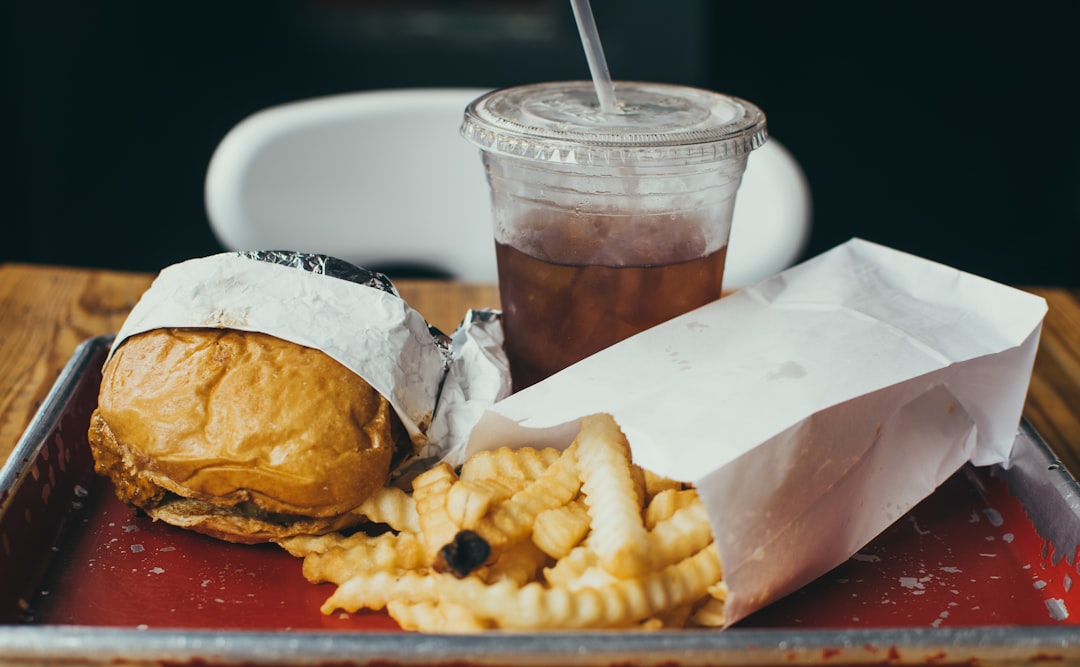Dysbiosis or Good Bacteria Imbalance (Microbial Imbalance Inside the Body/GIT).
Link between the Digestive System and Dysbiosis
The gut, or GI tract, has over 500 species of different types of living organisms/bacteria that make up the gut flora and all they have three major roles: the absorption of nutrients, the digestion of food while converting food into vitamins, and the prevention of toxins and pathogens from entering our bloodstream.
When the gut flora is balanced, it is called “orthobiosis,” which again is a term introduced by Dr. Metchnikoff. He considered dysbiosis so serious that he also said, “Death begins in the gut.”
Hazrat Jafar Sadiq (a well-known Muslim herbalist (aged 63-64) from, 765/148 AH Medina, Abbasid Caliphate) once said that “all of the friendly organisms in the human body (gut flora) are “friendly” In fact, when they are in balance (an overgrowth of bacteria, parasites, fungus, yeast, or other organisms in GIT), that’s what can lead to dysbiosis in modern words.
The body requires a balance between good and bad bacteria. In general, the bad bacteria are not a problem as long as a person maintain an adequate number of good bacteria as well.
Good bacteria will have names that begin with Bifidobacillus, Lactobacillus, and Bacillus. Examples include Bifidobacterium bifidum, Lactobacillus acidophilus, and Bacillus subtilis etc.
According to Dr. Qaisar Ahmed, the ideal balance of gut bacteria should be about 85% good bacteria and 15% bad bacteria; around 80% of our immune system resides in the gut, that’s why bacterial overgrowth can lead to many health issues, including mood disorders, skin problems, severe infections, bladder problems, and nervous system problems.
According to Dr. Elie Metchnikoff:
- Bacterial dysbiosis causes include E. coli (Escherichia coli), H. pylori (Helicobacter pylori), and Clostridium difficile.
- Parasitic dysbiosis may be caused by protozoa, tapeworms, flukes, and other parasites.
- Fungal dysbiosis can be caused by a number of Candida species, especially Candida albicans.
Having too many of these intestinal pathogens can prevent a person from digesting his/her food properly. As a result, food will ferment and putrefy, and the bad bacteria will grow/multiply.
This will lead to intestinal inflammation, which damages the lining of GIT/gut and then contributes to chronic digestive diseases, including SIBO (small intestinal bacterial overgrowth), irritable bowel disease, and candida overgrowth. (Candida and dysbiosis can also spread through sexual intercourse. That is why both partners should be treated when dysbiosis, candida, or other bacterial infection is suspected.)
Dysbiosis or Good Bacteria Imbalance in General practice
In general, women are two to three times more likely to be diagnosed with a digestive disorder (dysbiosis or good bacteria Imbalance) than men.
The following are some of the dysbiosis causes:
Allopathic Antibiotic use:
Antibiotics kill all the bacteria—the good and the bad too. Overprescribing antibiotics will also cause antibiotic resistance, which means the antibiotics don’t only kill the “good bacteria,” but they may not even help in cases of bacterial infections.
Use of any allopathic drug(s):
Proton-pump inhibitors and antacids are designed to block hydrochloric acid production in the stomach, but hydrochloric acid is the first line of defense against microbes that enter the body with food. The overuse of non-steroidal anti-inflammatory drugs (NSAIDs) also inhibits the growth of the duodenal flora.
Fermentation:
Small intestinal bacterial overgrowth (SIBO) is a carbohydrate intolerance condition induced by bacterial overgrowth in the small intestine, large intestine, and stomach. Any carbohydrate will be fermented by the “bad bacteria” and produce toxic waste products as a result.
Chronic stress:
Chronic stress will increase hormone levels, and highly impairs the immune system, which creates an environment in the GI tract that is susceptible to dysbiosis.
Poor diet:
A poor diet is a major factor in dysbiosis. Low-fiber diets, broiler chickens, and diets high in artificial
Environmental factors:
Environmental factors that influence dysbiosis include contaminated food and water, exposure to manufactured chemicals like pesticides or toxic metals (carbonated drinks and carbonated water), the presence of fungus or mold in the home, living in a foggy or damp climate.
Some other causes:
Consumption of alcohol also lead to the overgrowth of bad bacteria. Poor dental hygiene can cause an overgrowth of bad bacteria in the mouth. Having unprotected sex can also expose you to bad bacteria that may overtake beneficial populations.
Signs and Symptoms of Dysbiosis or Good Bacteria Imbalance
The most common signs and symptoms of dysbiosis include recurring digestive issues such as chronic diarrhea, heartburn, chronic constipation, bloating, belching, abdominal pain, frequent indigestion, bad breath, foul-smelling stools, undigested food in the stool, or nausea after taking supplements.
Some other symptoms are:
- Weight loss due to malabsorption, or weight gain.
- Food allergies, sensitivities, or intolerances.
- Sugar cravings.
- Alcohol craving.
- Rectal or vaginal itching.
- Weak or cracked fingernails.
- Iron deficiency.
- Loss of libido and infertility.
- Chronic sinus congestion.
- Bladder problems like interstitial cystitis, difficulty in urination.
- Hyperactivity like behavioral and learning disorders.
- Mental fog.
Anatomical Changes Associated with Dysbiosis or Good Bacteria Imbalance
Gut dysbiosis can lead to bowel and intestinal lining changes, which then increase the permeability of the intestine. This results in leaky gut syndrome—also called increased intestinal permeability.
Basically, the lining of the intestines and bowel loses its integrity, which opens the door to parasites, viruses, bacteria, and also undigested food molecules. The aggravated immune system will also become unstable and may attack the body and even lead to autoimmune diseases.
In addition, a skin rash from dysbiosis can occur due to exposure to harmful bacteria. Staphylococcus aureus, for example, can cause a staph infection, and lead to symptoms like swelling, redness, and pain.
The following are some of the other conditions associated with gut dysbiosis:
- Common digestive conditions like irritable bowel syndrome (IBS), celiac disease, lactose intolerance, gastritis, and inflammatory bowel diseases like Crohn’s disease and ulcerative colitis.
- Chronic intestinal infections like candida or parasites, oral thrush, and chronic vaginitis (or bacterial vaginosis).
- Depression or anxiety.
- Joint pain and arthritis.
- Interstitial cystitis.
- Behavioral and learning disorders.
- Chronic fatigue syndrome and fibromyalgia.
- Restless leg syndrome.
- Diabetes, obesity, and thyroid diseases.
- Multiple sclerosis.
Complications of Dysbiosis or Good Bacteria Imbalance 
There are various complications of gut dysbiosis. Here is a deeper look at some of them:
- Atopic eczema: Skin conditions are a common result of dysbiosis, but atopic eczema is especially prevalent. Most atopic eczema patients have malabsorption and intestinal dysbiosis.
- Candida: Candida is the condition where fungus and yeast will grow out of control, and lead to certain debilitating symptoms like persistent fatigue, muscle pain, constipation, and rectal itching.
- Irritable bowel syndrome: Various studies have found that IBS patients have a greater likelihood of having abnormal fecal flora.
- Other possible dysbiosis complications: When dysbiosis is left untreated, it can lead to severe fungal infections, and even increase the risk of cancer.
Dysbiosis or Good Bacteria Imbalance Diagnosis
Dysbiosis is often suspected when the patients have a food intolerance or allergy; unexplained fatigue; malnutrition; neuropsychiatric symptoms; breast or colon cancer; or inflammatory, autoimmune, or gastrointestinal disorders.
If patient regularly experience lots of digestive problems, like gas, bloating, or diarrhea. The most useful diagnostic dysbiosis test is called a comprehensive digestive stool analysis (CDSA).
The CDSA will include a number of procedures, such as biochemical evaluations of digestion, evaluation of bacterial microflora, detection of abnormal mycology, evaluation of intestinal absorption, and the detection of metabolic markers of intestinal metabolism.
From these tests, excessive triglycerides, meat, vegetable fibers, fatty acids, or cholesterol may indicate gut dysbiosis. Severe dysbiosis cases may also result in abnormal blood tests that indicate low levels of vitamin B12 and folic acid, and malabsorption of proteins.
Other tests used for dysbiosis include the breath hydrogen test, candida testing, the Genova IP test for leaky gut, u-biome tests to offer a bigger picture of the bacteria in the body, and zonulin testing. Zonulin is a protein that is commonly implicated in leaky gut syndrome, and levels will often be high.
Treatment
The dysbiosis treatment should be based on a person’s individual symptoms and conditions.
The first step in the treatment of dysbiosis is the removal of various aggravating factors like allopathic antibiotics, other allopathic drugs, and certain dietary factors that may be the cause of the bacterial or organism overgrowth.
However, there are also several remedies used in a natural dysbiosis treatment that may be useful as well.
Diet: 
Here are some natural diet/remedies and treatments that should find a home:
1. Probiotics: A high-potency probiotic is essential for the restoration of the bacterial population in the gut. The dosage of probiotic will depend mostly on the severity of your gut dysbiosis. Most high-quality probiotic supplements will contain lactobacillus, Saccharomyces boulardii, bifidobacterium, and a combination of other probiotic species.
2. Prebiotics: Prebiotics are thought to stimulate the activity and growth of probiotics in the gut. That is why it is a good idea to also take supplements with prebiotics like fructooligo saccharides (FOS), inulin, larch arabinogalactans, modified citrus pectin, and high-soluble fiber like psyllium husk.
3. Herbal therapy: There are many useful herbs in a natural dysbiosis treatment for example, oregano oil, garlic, goldenseal or berberine, wormwood or Chinese wormwood; grapefruit seed extract, thyme, cat’s claw, tea tree oil, peppermint, pau d’arco, Echinacea, fennel, amalaki reishi mushroom, olive leaf, cinnamon, myrrh, turmeric, burdock bearberry, elecampane, Oregon grape, kelp, and calendula.
4. Essential oils: A study published in the journal Alternative Medicine Review in 2009 found that the most promising essential oils for Dysbiosis or Good Bacteria Imbalance include caraway, lavender, ajwain, and bitter orange. The herbs that make these oils have long been used for gastrointestinal symptoms, and results of the study suggest that they will not negatively impact the gut flora.
Other essential oils found to have a positive impact on the GI tract include sweet fennel, star anise, and peppermint.
Yogurt is my food of the choice for probiotics and prebiotics essential for Dysbiosis or Good Bacteria Imbalance, said Dr. Qaisar Ahmed.
How to Prevent
It is always better to prevent a disease or condition from starting in the first place. The following are a few gut dysbiosis prevention methods:
- Eat an overall healthy and clean diet. An anti-dysbiosis diet will contain lots of green leafy vegetables, organic meats, and totally avoid processed foods and drinks.
- Avoid alcohol or extremely limit your intake. All forms of alcohol contain acetaldehyde, yeast, and other ingredients that harm the balance of bacteria and other organisms in the GI tract.
- Avoid antibiotics, and any other allopathic drugs like proton-pump inhibitors, antacids, and non-steroidal anti-inflammatory drugs (NSAIDs). All of these drugs inhibit the growth of “good” bacteria in the GI tract and rest of the body.
Homeopathic Treatment for Dysbiosis or Good Bacteria Imbalance
Phosphorus
Gastritis, accompanied by nausea and vomiting, vomiting with food. Constant nausea and soreness in the pit of the stomach. Water brash, heartburn, bitter or sour belching.
Argentum Nitricum
Argentum Nitricum is an excellent homoeopathic medicine for patients suffering due to chronic alcoholism. A primary symptom for using Argentum Nitricum is pain in the stomach which radiates to all parts of the abdomen. The pain may be gnawing, burning or constricting in nature, frequent belching. Distension of the abdomen. Duodenal Ulcers.
Nux Vomica
Sour taste, and nausea in the morning, after eating. Weight and pain in stomach; worse, eating, sometime after. Flatulence and pyrosis. Sour, bitter eructation. Nausea and vomiting, with much retching. Ravenous hunger, especially about a day before an attack of dyspepsia. Region of stomach very sensitive to pressure. Epigastrium bloated, with pressure like a stone, several hours after eating. Desire for stimulants. Loves fats and tolerates them well (Puls opposite). Dyspepsia from drinking strong coffee. Difficult belching of gas. Wants to vomit but cannot. 
Abdomen: Bruised soreness of abdominal walls. Flatulent distension, with spasmodic colic. Colic from uncovering. Liver engorged, with stitches and soreness. Colic, with upward pressure, causing short breath, and desire for stool. Weakness of abdominal ring region. Strangulated hernia (Op). Forcing in lower abdomen towards genitals. Umbilical hernia of infants.
Stool: Constipation, with frequent ineffectual urging, incomplete and unsatisfactory; feeling as if part remained unexcelled. Constriction of rectum. Irregular, peristaltic action; hence frequent ineffectual desire, or passing but small quantities at each attempt. Absence of all desire for defecation is a contra-indication. Alternate constipation and diarrheas – after abuse of purgatives. Urging to stool felt throughout abdomen. Itching, blind hemorrhoids, with ineffectual urging to stool; very painful; after drastic drugs. Diarrheas after a debauch; worse, morning. Frequent small evacuations. Scanty stool, with much urging. Dysentery: stools relieve pains for a time. Constant uneasiness in rectum. Diarrheas, with jaundice (Dig).
Colocynth
The colocynth stomach pains are clutching, cramping and digging, as if grasped by the fingers. Similar pains occur lower down in the abdomen, but they are still better from hard pressure, and from doubling up which amounts to pressure come on in paroxysms of increasing severity, until the patient is nauseated and vomits, and are associated with great restlessness and faint, sinking feeling at the pit of the stomach. The victim bends down over the back of a chair, or over the footboard, if unable to get out of bed.
Carbo Vegetabilis :
Eructation, heaviness, fullness, and sleepiness; tense from flatulence, with pain; worse lying down. Eructation after eating and drinking. Temporary relief from belching. Rancid, sour, or putrid eructation. Waterbrash, asthmatic breathing from flatulence. Nausea in the morning. Burning in stomach, extending to back and along spine. Contractive pain extending to chest, with distention of abdomen. Faint gone feeling in stomach, not relieved by eating. Crampy pains forcing patient to bend double. Distress comes on a half-hour after eating. Sensitiveness of epigastric region. Digestion slow; food putrefies before it digests. Gastralgia of nursing women, with excessive flatulence, sour, rancid belching. Aversion to milk, meat, and fat things. The simplest food distresses. Epigastric region very sensitive.
Abdomen : Pain as from lifting a weight; colic from riding in a carriage; excessive discharge of fetid flatus. Cannot bear tight clothing around waist and abdomen. Ailments accompanying intestinal fistulae. Abdomen greatly distended; better, passing wind. Flatulent colic. Pain in liver.
Rectum and Stool : Flatus hot, moist, offensive. Itching, gnawing and burning in rectum. Acrid, corrosive moisture from rectum. A musty, glutinous moisture exudes. Soreness, itching moisture of perineum at night. Discharge of blood from rectum. Burning at anus, burning varices (Mur ac). Painful diarrheas of old people. Frequent, involuntary cadaverous-smelling stools, followed by burning. White hemorrhoids; excoriation of anus. Bluish, burning piles, pain after stool.
Lycopodium :
Lycopodium is one of the top homoeopathic medicines for GIT in cases where the fullness of the abdomen is a leading symptom. Eating tiny quantities of food can also lead to fullness and distension of the stomach, gnawing, burning or constrictive pain in the stomach. The pain may get better on rubbing. Nausea and sour belching, vomiting of food and bile, loss of appetite.
Bismuth :
Bismuth works well in cases of gastritis where cold drinks bring relief to the symptoms – by drinking something cold. There is also pain in the area around the stomach. Bending backwards brings a little relief to the pain, a sensation of pressure and heavy load on the stomach, inability to retain fluids in the stomach; Fluid is vomited as soon as it reaches the stomach. Vertigo and weakness.
Arsenic Album 
Arsenic Album works well when there is a burning pain in the stomach. Ingesting even a little food or drink worsens the pain. Taking something warm bring relief. Acidic and cold food/drinks worsen the pain and burning, weakness, exhaustion, weight loss, and intense anxiety.
Bryonia :
When – the stomach feels heavy, with rising acidity and a bitter or sour taste. Pain and nausea are worse from motion – even at least motion. The patient has a dry mouth and is thirsty for long drinks – which increase discomfort.
Bryonia has strongly suggested if a person is grumpy and wants to stay completely still and not be touched or talked to.
Carbo vegetabilis :
Eructations, heaviness, fullness, and sleepiness; tense from flatulence, with pain; worse lying down. Eructations after eating and drinking. Temporary relief from belching.
Rancid, sour, or putrid eructations. Waterbrash, asthmatic breathing from flatulence.
Nausea in the morning. Burning in stomach, extending to back and along the spine. Contractive pain extending to chest, with distention of abdomen. Faint gone feeling in the stomach, not relieved by eating. Crampy pains force the patient to bend double. Distress comes on a half-hour after eating. Sensitiveness of epigastric region.
Digestion slow; food putrefies before it digests. Gastralgia of nursing moms, with excessive flatulence, sour, rancid belching. Aversion to milk, meat, and fatty food. The simplest food distresses. The epigastric region is very sensitive.
Natrum Carbonicum :
Feels swollen and sensitive. Ill effects of drinking cold water when overheated. Waterbrash. Night hunger – Hungry at 3 am. Very weak digestion, caused by the slightest error of diet. Averse to milk. Depressed after eating. Bitter taste. Old dyspeptics, always belching, have sour stomach and rheumatism. Dyspepsia relieved by soda drinks or bakery.
Antimonium Crudum :
Loss of appetite. A desire for acids, pickles. Thirst in evening and night. Eructation tasting of the ingesta. Heartburn, nausea, vomiting. After nursing, the child vomits milk in curds, refuses to nurse afterwards, and is very cross.
Gastric and intestinal complaints from bread and pastry, acids, sour wine, cold bathing, overheating, hot weather. Constant belching. Gouty metastasis to stomach and bowels. Sweetish water brash. Bloating after eating.
Ipecac :
Ipecac should be prescribed when there is nausea – all the time. Vomiting of white glairy mucus or food appears, but the nausea is not relieved even after vomiting. Mouth, moist; much saliva. Constant nausea and vomiting. Vomits food, bile, blood, mucus. Stomach feels relaxed, as if hanging down. Hiccough.
Amebic dysentery with tenesmus; while straining pain so great that it nauseates; little thirst. Cutting, clutching; worse, around the navel. Body rigid; stretched out stiff.
Stools Pitch-like green as grass, like frothy molasses, with griping at navel. Dysenteric, slimy.
Antimonium Crudum 
Antimonium Crudum should be advised when belching is constant. Belching in such cases tastes mainly of eaten food. Dyspepsia and vomiting may also be present. Eructation tasting of the ingesta. Heartburn, nausea, vomiting. After nursing, the child vomits its milk in curds, and refuses to nurse afterwards, and is very cross. Gastric and intestinal complaints from bread and pastry, acids, sour wine, cold bathing, overheating, hot weather. Gouty metastasis to stomach and bowels. Sweetish water brash. Bloating after eating.
Diarrhea alternates with constipation, especially in old people. Diarrhea after acids/acidic food and/or drinks, after baths, overeating; slimy, flatulent stools. Mucous piles, continued oozing of mucus. Hard lumps mixed with watery discharge. Catarrhal proctitis. Stools composed entirely of mucus.
Kali Bichrome :
Nausea and vomiting immediately after eating. Feels as if digestion had stopped. Dilatation of stomach. Gastritis. Round ulcer of stomach. Stitches in region of liver and spleen and through to spine. Dislikes water. Cannot digest meat. Desire for beer and acids. Gastric symptoms are relieved after eating, and the rheumatic symptoms reappear (alternate). Vomiting of bright yellow water.
Cutting pain in abdomen, soon after eating. Chronic intestinal ulceration. Soreness in right hypochondrium, fatty infiltration of liver and increase in soft fibrous tissue (cirrhosis). Painful retraction, soreness and burning.
Jelly like stool, gelatinous; worse, mornings. Dysentery; tenesmus, stools brown, frothy. Sensation of a plug in anus. Periodic constipation, with pain across the loins. Brown urine.
Graphites :
Nausea and vomiting after each meal. Morning sickness during menstruation. Pressure in stomach, Fullness and hardness in abdomen, as from incarcerated flatulence; must loosen clothing; presses painfully at abdominal ring, constrictive pain in stomach relives temporarily after eating or drink something hot or by lying down.
Croaking in abdomen. Inguinal region sensitive, swollen. Colic pain, Pain of gas opposite the side on which he lies. Chronic diarrhea, stools brownish, liquid, undigested, offensive.
Constipation; large, difficult, knotty stools united by mucus threads. Burning hemorrhoids. Prolapse, diarrheas; stools of brown fluid, mixed with undigested substance, very fetid, sour odor. Smarting, sore anus, itching. Lump stool, conjoined with threads of mucus. Varices of the rectum. Fissure of anus (Ratanhia; Paeonia).

P. S: This article is only for doctors having good knowledge about homeopathy, and for learning purpose(s).
None of above-mentioned medicine(s) is/are not the full/complete treatment of Dysbiosis or Good Bacteria Imbalance, but just hints for treatment; every patient has his own constitutional medicine along with these mentioned above.
P. S: This article is only for doctors having good knowledge about Homeopathy and allopathy, for learning purpose(s).
For proper consultation and treatment, please visit our clinic.
None of above-mentioned medicine(s) is/are the full/complete treatment, but just hints for treatment; every patient has his/her own constitutional medicine.
To order medicine by courier, please send your details at WhatsApp– +923119884588
 Dr. Sayyad Qaisar Ahmed (MD {Ukraine}, DHMS), Abdominal Surgeries, Oncological surgeries, Gastroenterologist, Specialist Homeopathic Medicines.
Dr. Sayyad Qaisar Ahmed (MD {Ukraine}, DHMS), Abdominal Surgeries, Oncological surgeries, Gastroenterologist, Specialist Homeopathic Medicines.
Senior research officer at Dnepropetrovsk state medical academy Ukraine.
Location: Al-Haytham clinic, Umer Farooq Chowk Risalpur Sadder (0923631023, 03119884588), K.P.K, Pakistan.
Find more about Dr Sayed Qaisar Ahmed at:
https://www.youtube.com/Dr Qaisar Ahmed
